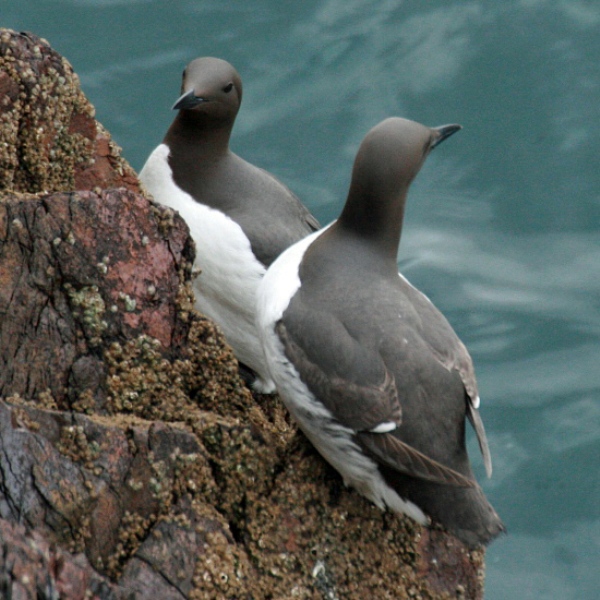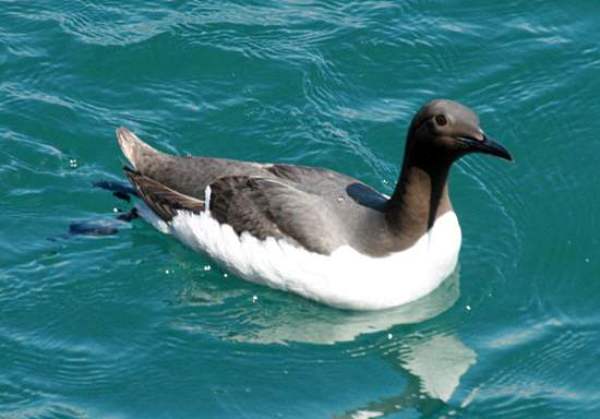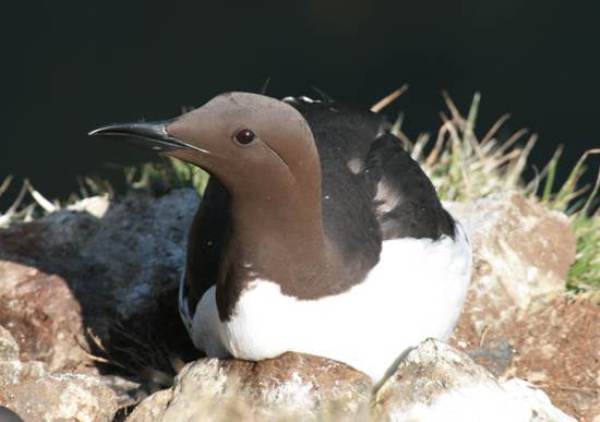Uria aalge - Common Guillemot
Phylum: Chordata - Class: Aves - Order: Charadriiformes - Family: Alcidae
Identification - Distribution - Lifecycle - Food - Predators - Reference Sources

The Common Guillemot (usually called simply Guillemot), like its close relative the Razorbill, is a member of the auk family, but this thick-set seabird is far more numerous around our shores: some 1.4 million pairs of Guillemots breed in UK coastal habitats.
When Guillemots stand upright, they bear more than a passing resemblance to penguins, but whereas Guillemots can fly, penguins are unable to do so.
Guillemots are typically 40cm long and have a wingspan of about 65cm (exceptionally over 70cm). Their dark chocolate brown upper plumage distinguishes them from the otherwise quite similar but black-and-white Razorbill.

When swimming, Guillemots look and seem to move rather like small chocolate-brown-and-white ducks when viewed from a distance; however, once they dive beneath the surface they are fast and extremely agile, using their powerful wings as paddles.

Making no nest, the Guillemot lays a single, large egg, white with brown markings, on a cliff ledge, often with dozens or even hundreds of others packed in close to one another on tiers of such ledges on a rock face.
The eggs of this seabird are quite sharply pointed (pear-shaped, or pyriform) and so if they do roll they tend to go in tight circles - a useful feature given the limited space available!
Male and female Guillemots take turns at incubating the egg, which takes about a month to hatch.
Please Help Us: If you have found this information interesting and useful, please consider helping to keep First Nature online by making a small donation towards the web hosting and internet costs.
Any donations over and above the essential running costs will help support the conservation work of Plantlife, the Rivers Trust and charitable botanic gardens - as do author royalties and publisher proceeds from books by Pat and Sue.

